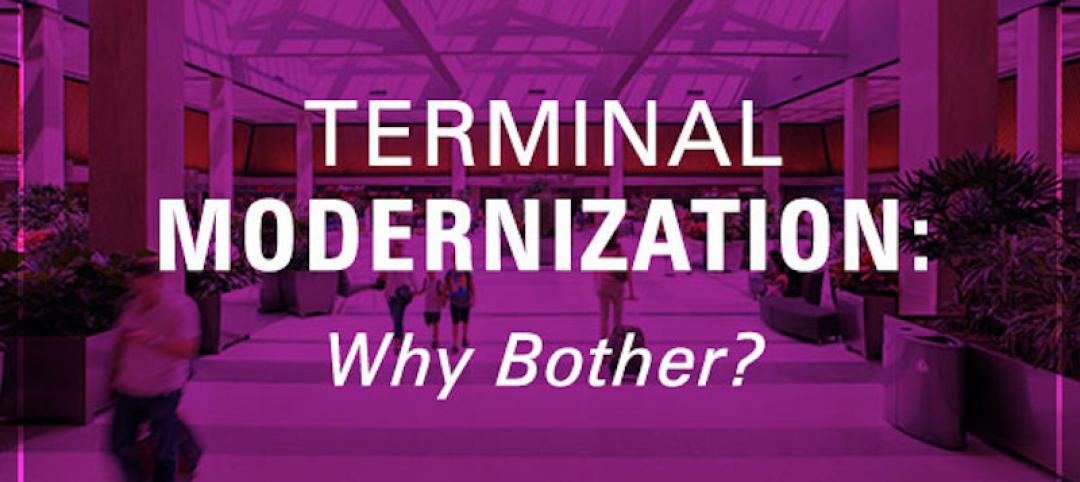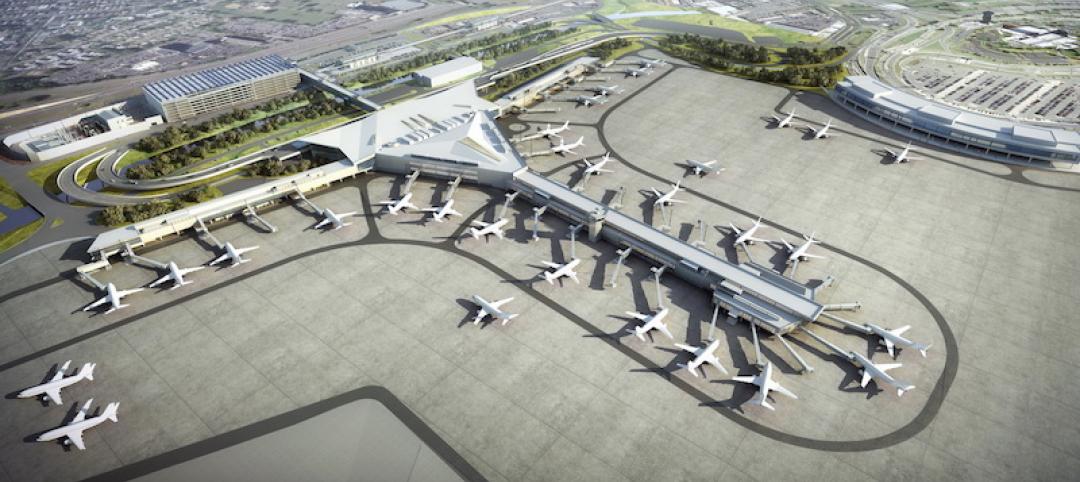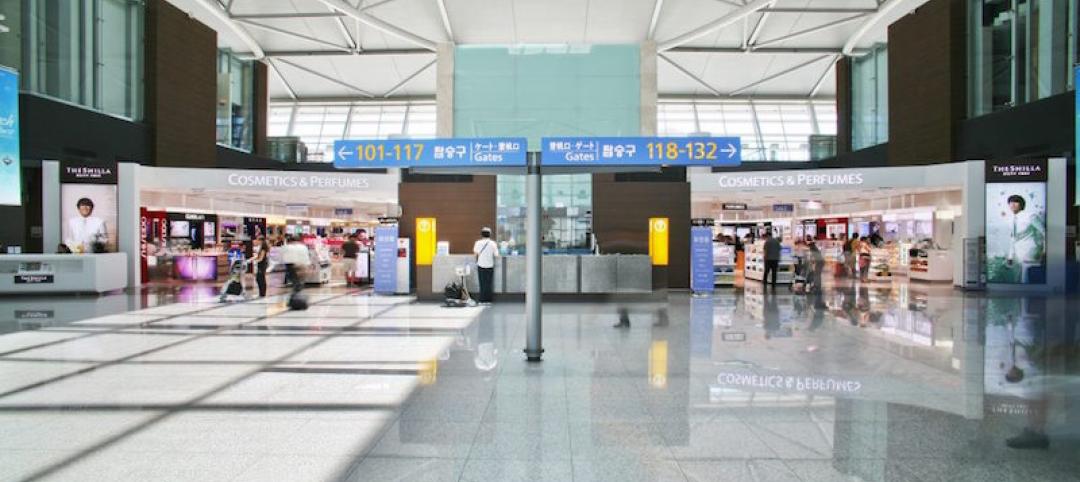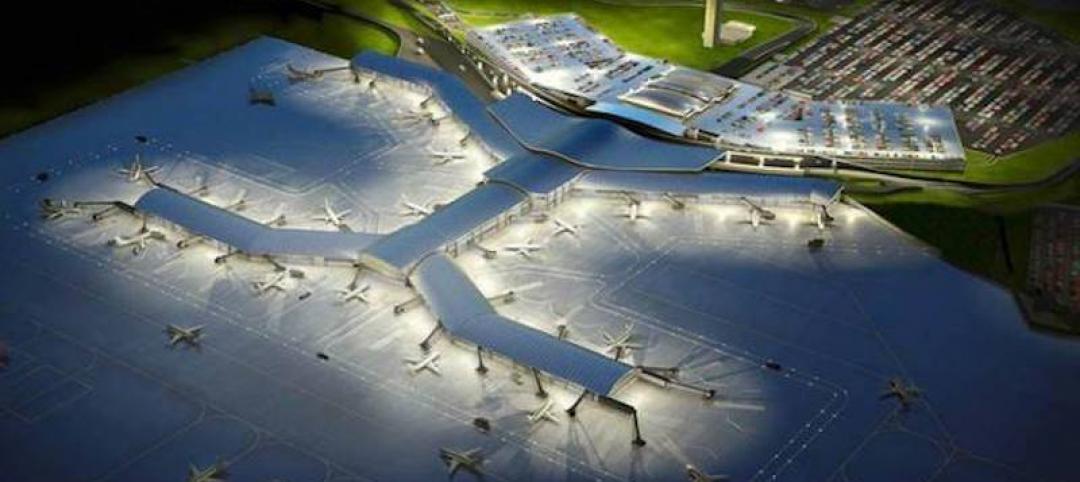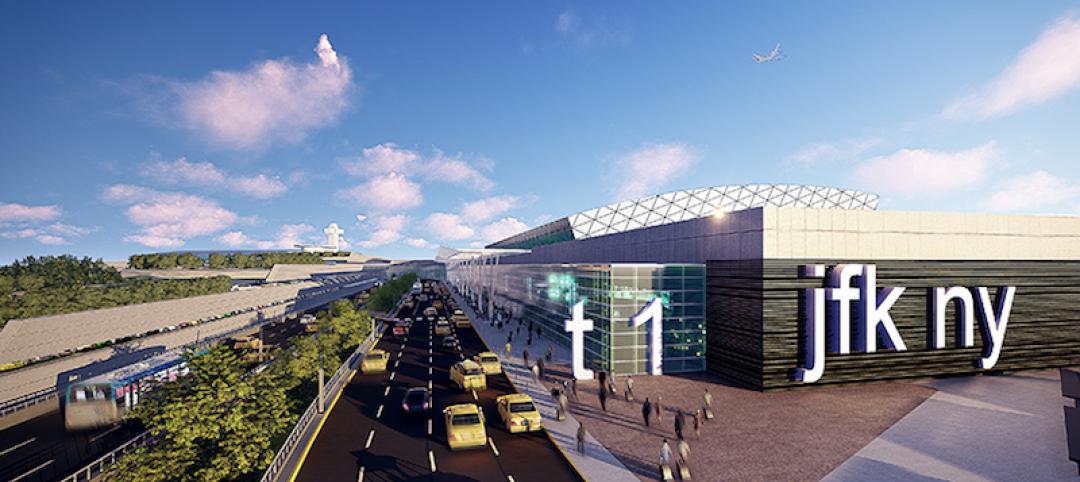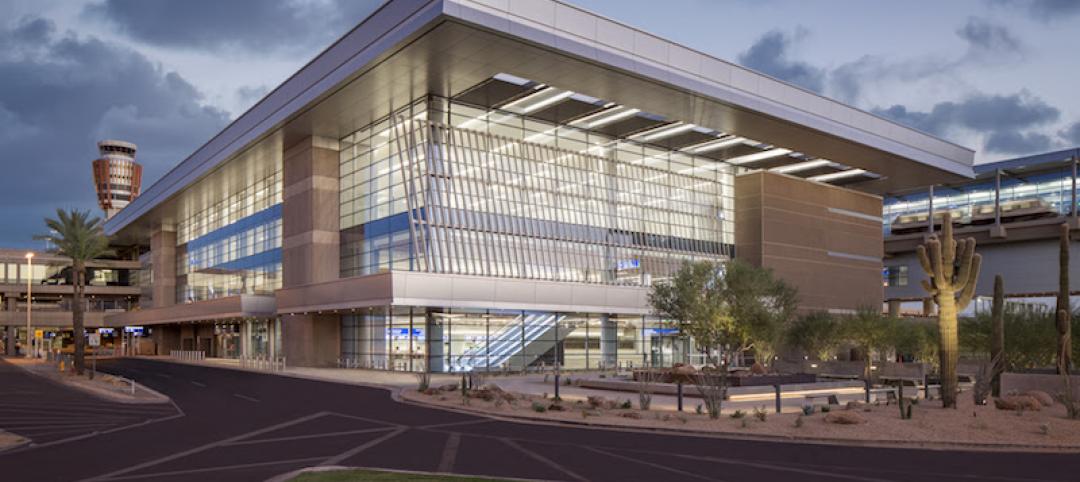At Florence, Italy’s Aeroporto Amerigo Vespucci, the new international airport terminal will feature a fully operating vineyard on the facility’s rooftop. Designed by Rafael Viñoly Architects, the terminal is expected to see over 5.9 million passengers annually. Renderings for the project have recently been released.
The 538,195-sf terminal project will involve both lengthening the existing runway and reorienting it 90 degrees away from the nearby hills, which have limited the operations of many modern planes.
The airport design aims to create a sense of place and improve the passenger experience. In the skylit terminal, arrivals and departures will face each other across a large, central public space, the Piazza. This organization will help streamline circulation into and out of the terminal.
In addition, the terminal will provide access to mass transit, parking, and retail, which will serve both travelers and the local community. The terminal will be connected to the city and the wider region by multimodal transport options, including a new light rail system.
A distinctive feature of the project is a 19-acre vineyard rising above the terminal. This will include 38 active vineyard rows on the building’s sloping roof—contributing to LEED Platinum sustainability rating and representing Italy’s winemaking tradition. A leading winegrower from the region will cultivate the vineyards, and the wine will be crafted and aged in special cellars located beneath the terminal’s roof.
The airport terminal will be completed in two phases: Phase one is expected to be finished in 2026, phase two in 2035.
On the Building Team:
Owner: Toscana Aeroporti SpA
Design architect and architect of record: Rafael Viñoly Architects
MEP engineer: Tekne SpA
Structural engineer: Eckersley O’Callaghan (EOC)
General contractor: Toscana Aeroporti Construction (TAC)

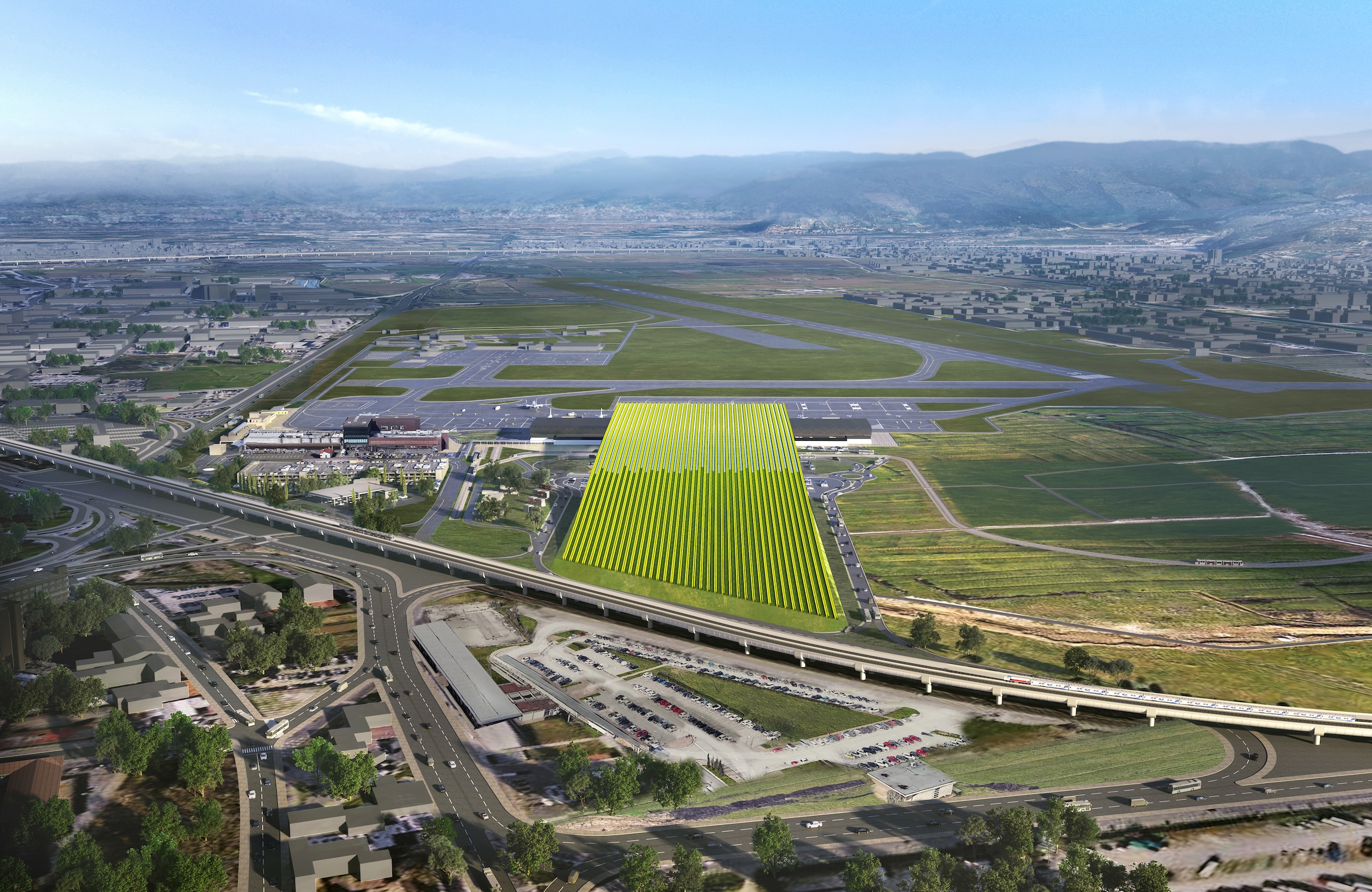
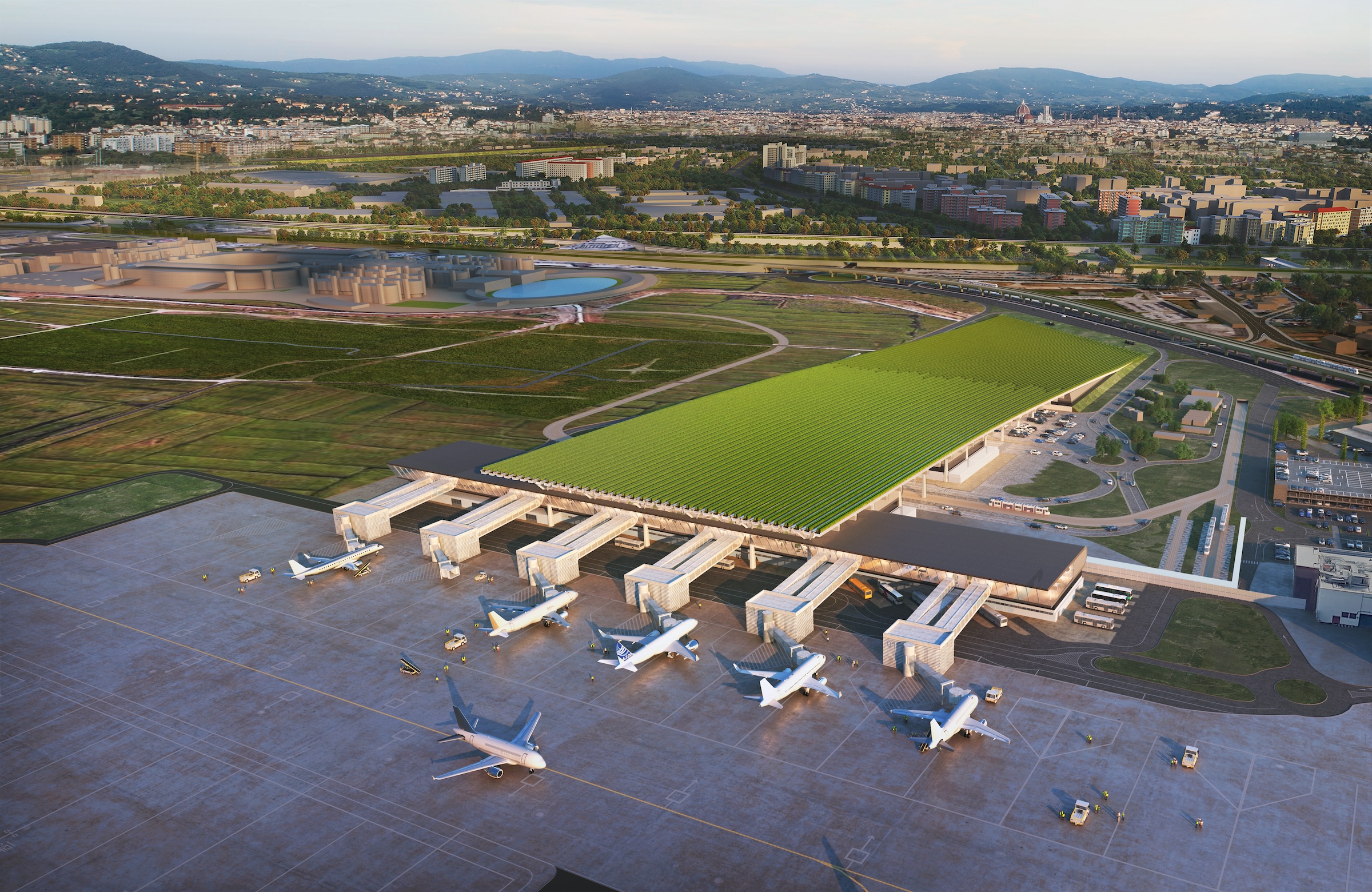
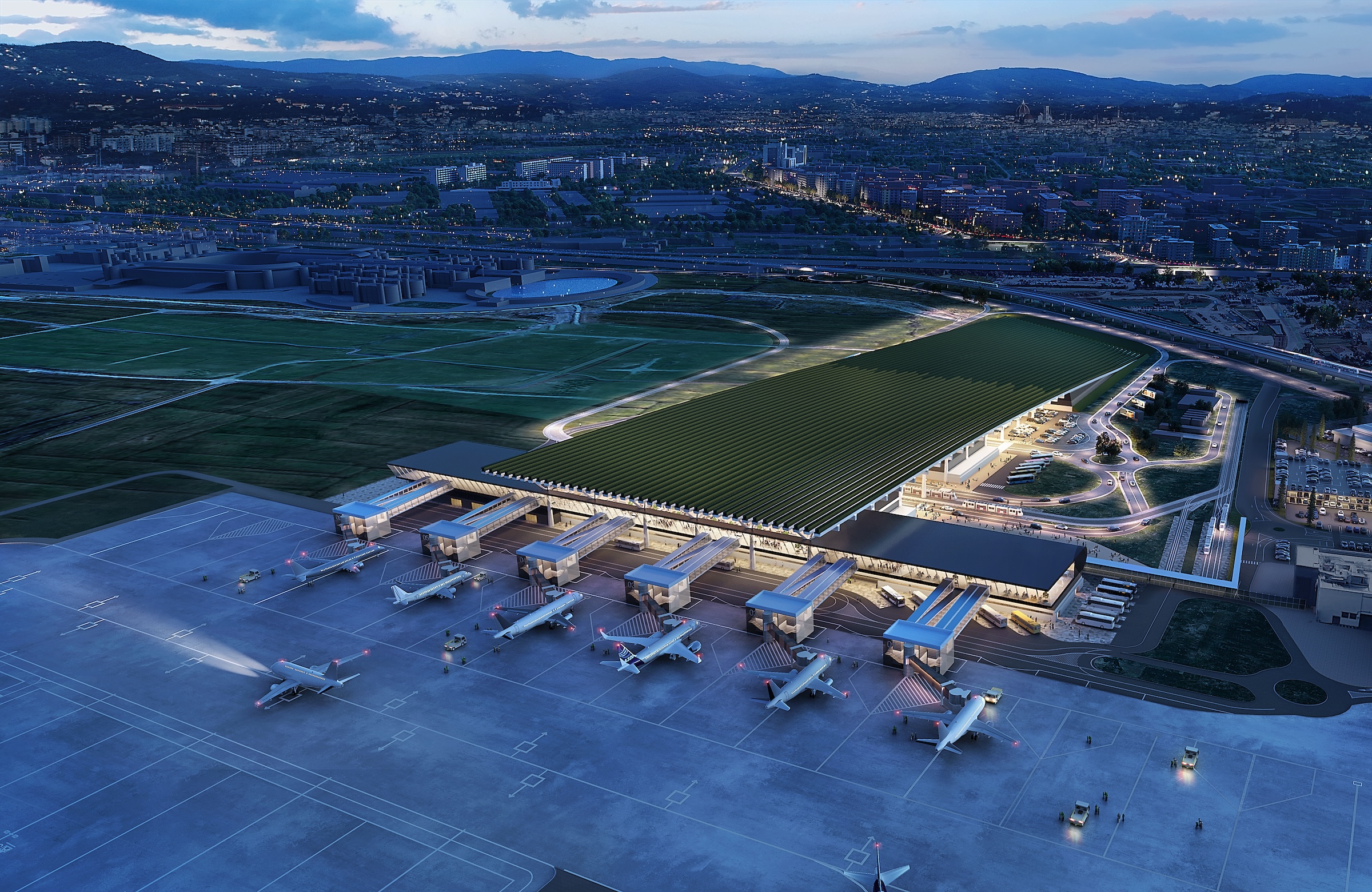
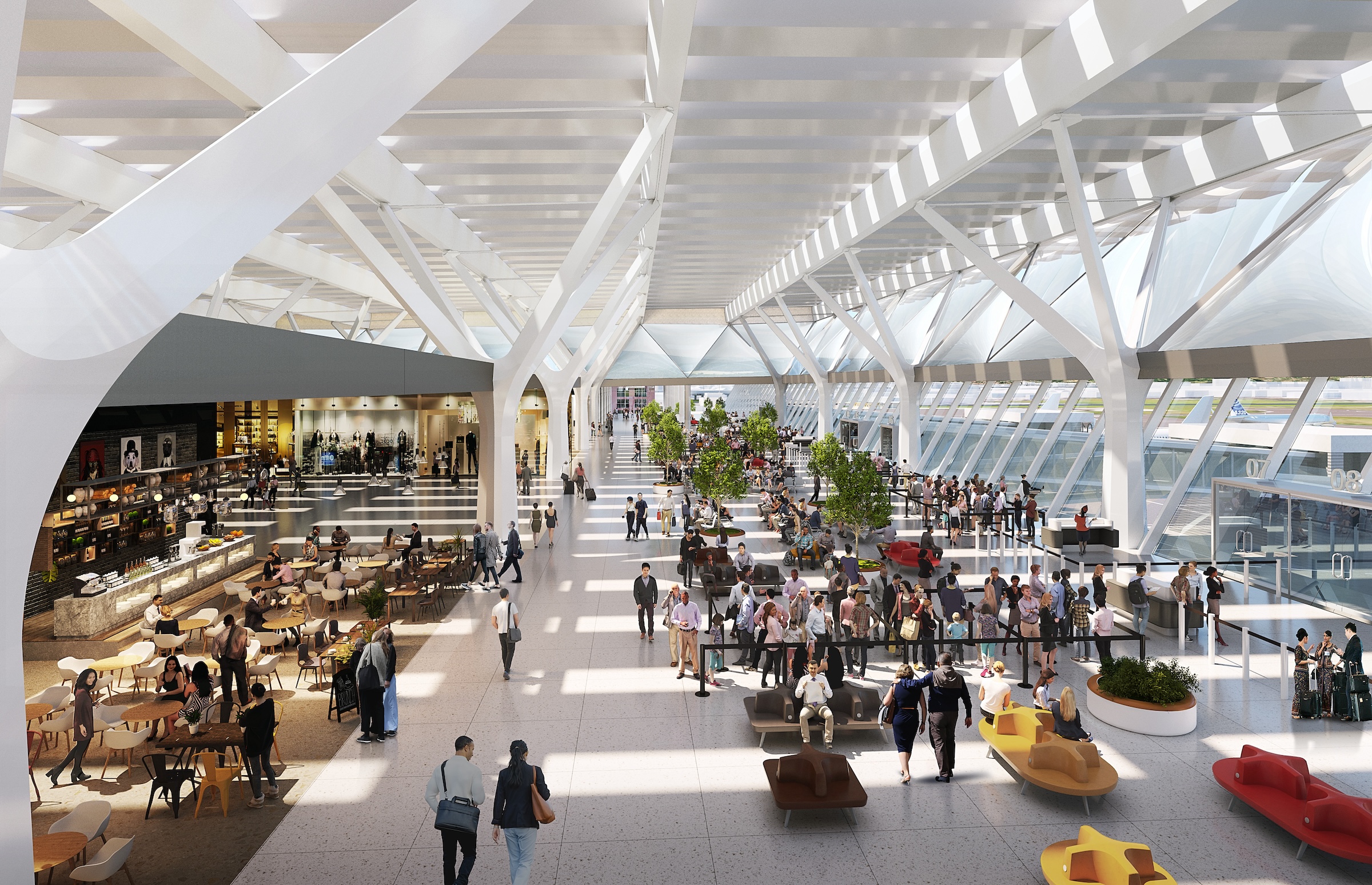
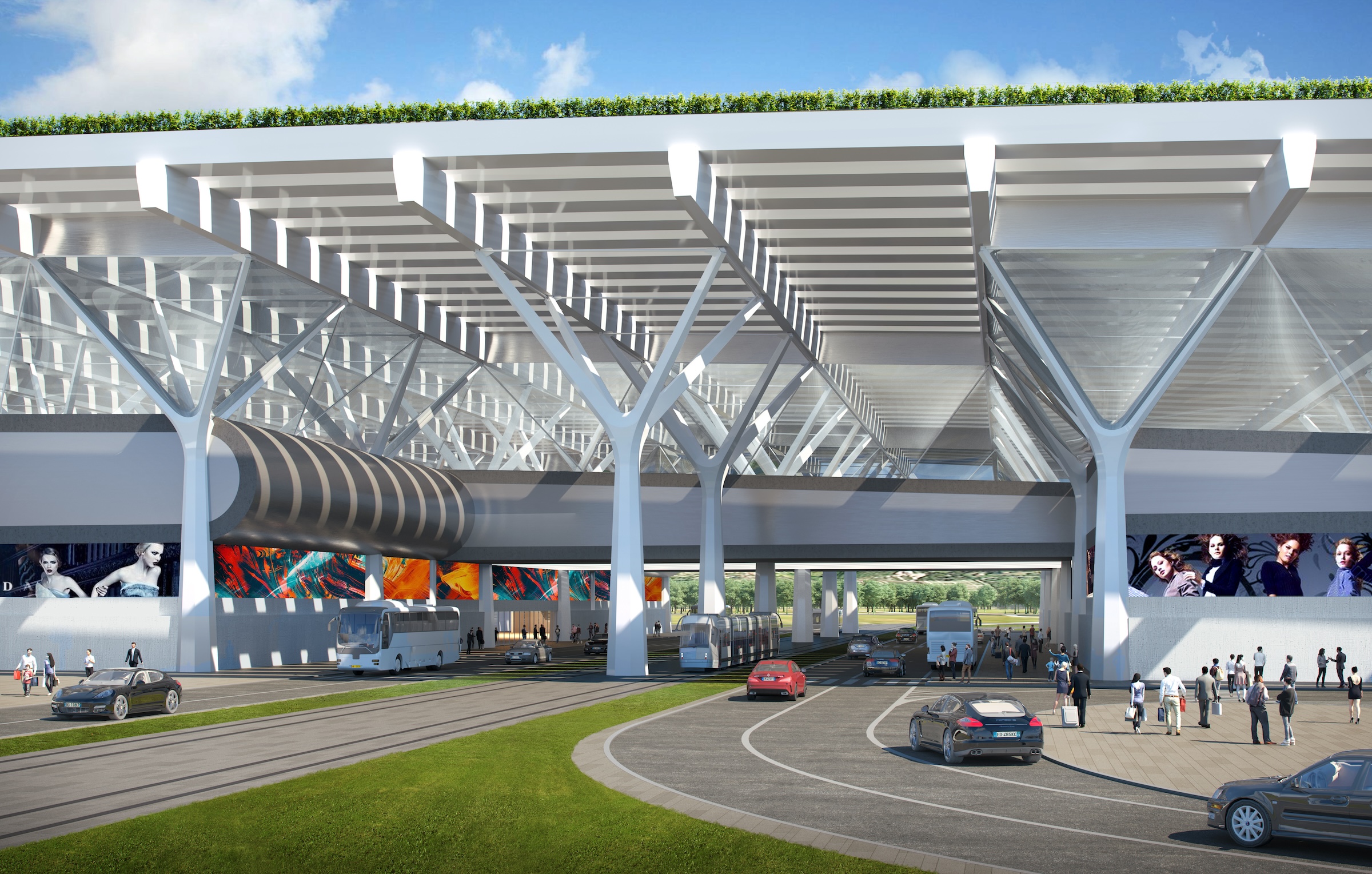
Related Stories
Airports | Sep 11, 2017
Terminal modernization: Why bother? Part I
A terminal modernization program can be a complicated and expensive task that airport operators may be hesitant to undertake unless necessitated by demands for increased capacity. This is the first post in our series examining why airport operators should bother to upgrade their facilities, even if capacity isn’t forcing the issue.
Hotel Facilities | Jul 5, 2017
It only took 26 days to complete construction on the Crowne Plaza Changi Airport hotel extension
PPVC techniques allowed the project to save time and manpower.
Airports | Jun 26, 2017
Newark Liberty International Airport breaks ground on $2.4 billion redevelopment project
The project includes a new 1 million-sf terminal building with 33 domestic aircraft gates.
Building Team Awards | Jun 8, 2017
Missing link: Denver International Airport and Transit Center
Gold Award: A new mixed-use transit center fulfills Denver’s 28-year plan to improve access to the nation’s fifth-busiest airport.
Airports | May 15, 2017
Five trends for airport retail
CallisonRTKL Vice President Kevin Horn pinpoints how travel retail is changing dramatically.
Reconstruction & Renovation | Mar 16, 2017
Pols are ready to spend $1T on rebuilding America’s infrastructure. But who will pick which projects benefit?
The accounting and consulting firm PwC offers the industrial sector a five-step approach to getting more involved in this process.
Airports | Feb 23, 2017
New Orleans Airport to add five additional gates and $110 million to current expansion
The project is being hailed as the city’s most transformative since the construction of the Superdome.
Projects | Jan 25, 2017
Trump prioritizes infrastructure projects, as rebuilding America is now a hot political potato
Both parties are talking about $1 trillion in spending over the next decade. How projects will be funded, though, remains unresolved.
Airports | Jan 17, 2017
JFK Airport set for $10 billion renovation
In addition to the airport itself, the overhaul will also improve road and rail access to meet projected passenger growth.
Airports | Dec 6, 2016
Phoenix Sky Harbor International Airport creates a destination inside Terminal 3
DWL Architects, SmithGroupJJR, and Corgan design passenger experience that connects to the surrounding city and Sonoran desert landscape.



